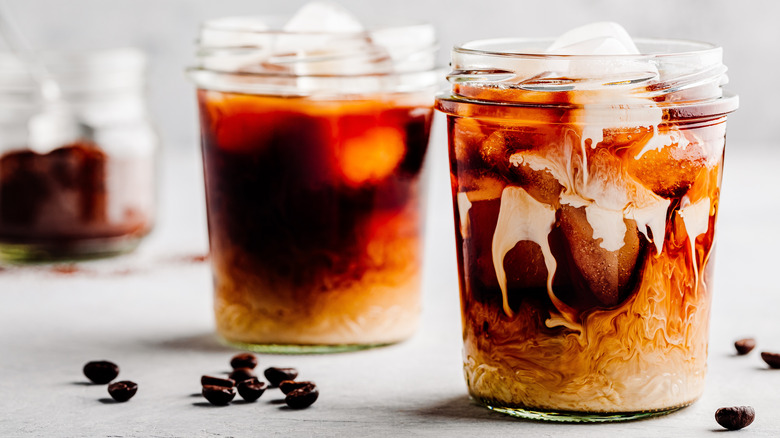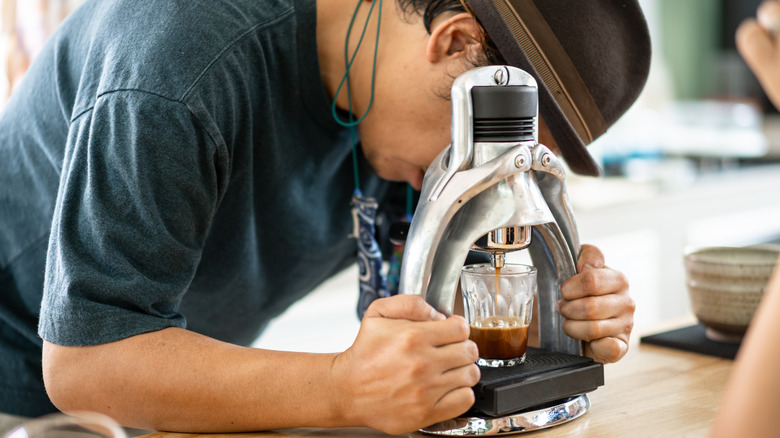How Cold Brew Espresso Must Be Prepared Differently
Cold brewing coffee at home is a fairly simple process. Using a medium to coarse grind, coffee is submerged in water and left to steep for several hours before it's ready to serve (via Kaldis Coffee). Cold brewing espresso, however, is not quite as simple. This is because the extraction process of espresso and cold brew are diametrically opposed.
As Brew Coffee Home explains, espresso is not a type of bean, but it isn't a roast either. When you buy a product labeled "espresso beans" at the store, the roaster is simply saying that the beans will be delicious if used to make that specific type of brew. However, any bean can be used to make espresso — what makes a coffee an "espresso" is the extraction method.
Espresso coffee is extracted through pressure — meaning, pressure forces water through the coffee grinds — and generally speaking, the higher pressure extraction makes a better espresso (via Bean Ground). Pressure that's too low results in stronger, bitter coffee because the grinds spend too much time in the water, extracting too many compounds. Pressure that is too high results in espresso that's weak, since the water doesn't have enough time to permeate the coffee. According to The Exotic Bean, espresso needs a fine grind, which allows for more flavor extraction during its shorter brew time. This is why the process of preparing cold brew with espresso varies from its usual method.
How to prepare cold brew espresso
In a regular cold brew process, where coffee is brewed through immersion, the temperature of the water slows down the extraction of the coffee (via Driftaway Coffee). The cooler water also effects what compounds the water extracts from the coffee bean. For example, the cold brew process leaves certain aromatics in the bean. The trade off, however, is that bitter tasting compounds are also left behind. The process, which requires a courser grind, also makes less acidic coffee. While it feels counter-intuitive, if the grind is larger, the water can flow through it more easily. Water is more likely to over-extract the coffee out of the fine grinds, and given the longer extraction time of cold brew, you don't want that to happen (via CoffeeSock).
While it seems like the polar opposite brewing methods of espresso and cold brew make for a caffeinated missed connection, Perfect Daily Grind says you can cold pull an espresso shot using a manual espresso maker. To compensate for the cold water, which extracts less compounds, Andrew Pernicano, who serves as the "Head of Education and Community at Flair Espresso," tells the website to make the espresso grind even finer and add some extra grounds to the portafilter. He also recommends pre-infusing the grounds by pausing the lever just as the espresso begins to drip out for 120-180 seconds before pulling the full shot. Stick with a 1:1 brew ratio.

